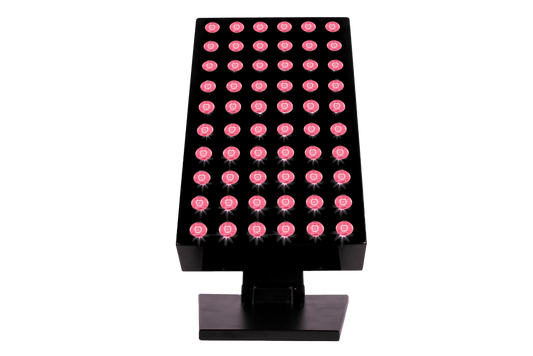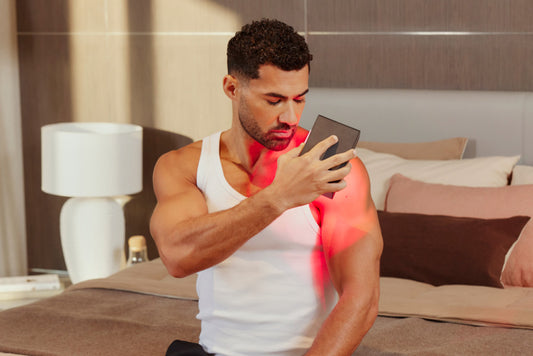Improve Hair Thickness With Red Light Therapy
Lina Nilsson

One of the many benefits of Red Light Therapy you rarely hear of is its use for thickening hair.
Most of us shed between 50 and 100 hairs every day.
Hair treatments at medical centers are expensive, without the guarantee of your preferred results.
A lower risk solution that you can do from home?
Use a Red Light Therapy device.
How Does Red Light Therapy Work For Hair?
Preliminary studies suggest Red LED may help improve circulation around hair follicles, potentially supporting thicker hair.
The same studies shows it can also improve skin, combatting scalp issues that may stand in the way of a full head of hair.
Does It Work For All Types Of Hair Loss?
Many factors could be behind thinning hair. If the reason is stress, it may be easier to identify the stressors and tackle the problem at its root.
Some medical conditions can cause hair to thin, as well. Red light therapy unfortunately may not work for this.
The most common reason for thinning hair is male and female pattern baldness.
Some studies have explored Red Light Therapy for certain types of hair thinning, such as male and female pattern baldness, with encouraging findings. However, individual results may vary, and this may not be suitable for all causes of hair thinning.
How To Pick The Right Device For Thicker Hair
It can be a bit overwhelming to navigate the red light therapy market. With so many different products, all in different price ranges, making a decision can feel impossible at times.
If you're interested in exploring red light, we'll help you figure out what to look for in your device, to get the best results for your money.
1. Wavelengths
While different studies show varied results, the majority agrees that you should be using a wavelength of 600-830nm for hair. If the product you're looking at doesn't specify these details, it's likely because the device doesn't offer these wavelengths.
For targeting, thinner spots as an example, the Bullet Red Light Therapy Device features wavelengths of 630, 660, and 850 nm. The slightly larger Mini Red Light Device offers 660 and 850 nm. This would cover a larger part of your head, like your hairline.
For a larger option that can cover your entire head, we'd recommend the Demi Red Light Therapy Device. The Demi offers options of 660 and 850 nm.

2. Amount of LED lights
The amount of lights in your device will determine how wide and even the coverage will be, controlling how effective your results will be.
Compare different brands to find a device that offers the most amount of LED lights within your budget (if you wish to save some time, you'll find BON CHARGE devices are designed to maximize LED coverage for even results).
3. Debunking irradiance - What difference does it make?
While a lot of companies claim that higher irradiance gives better results, there's no real studies to back this claim. Make sure to check your sources.
Final Tips For Best Results
Once you start using red light for your hair, it's important you do it the right way.
Always follow instructions from the guidelines. The duration periods and frequency recommendations are there for a reason. We recommend you use your BON CHARGE Red Light Therapy devices for 10-20 minutes daily, for best results.
Thicker hair is a slow process. Be patient, and stick to your routine. Consistency is key.
Enjoyed this article? Find more wellness education tips, or sign up to get well-being insights straight to your inbox.
This content is for informational purposes only and does not constitute medical advice. Products mentioned are not intended to diagnose, treat, cure, or prevent any medical condition. Individual experiences may vary.









